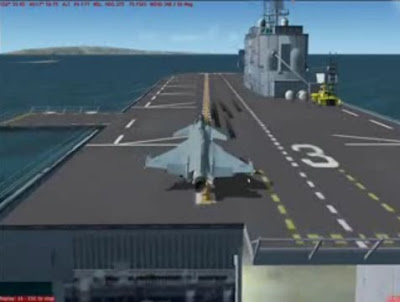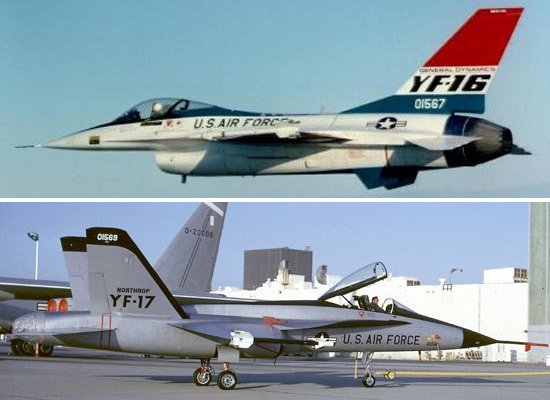
Posted on 12/23/2009 6:00:04 AM PST by sukhoi-30mki

Sea Gripen landing on carrier (image : Scenium)
Saab Touts Sea Gripen for India and Brazil
Saab is responding to an Indian Navy (IN) request for information (RfI) regarding future carrier-capable fighters with a new development of the Gripen NG, dubbed the Sea Gripen.
India's RfI, selectively released to bidders over recent weeks, seeks detailed information on a common aircraft design for conventional aircraft carrier operations and short take-off but arrested recovery (STOBAR) operations.
Beyond the (much delayed) entry into service of the INS Vikramaditya (the rebuilt former Russian Navy vessel Admiral Gorshkov ), India has ambitious plans to build three indigenous aircraft carriers (IACs). Near-term procurement of the MiG-29K should equip Vikramaditya and IAC 1. The IN's RfI is looking for a follow-on type to operate from IAC 2 and 3.
Jane's understands the RfI has been issued to Boeing, Dassault, Eurofighter, Lockheed Martin, Sukhoi and Saab. While India is notionally developing a naval version of the Hindustan Aeronautics Limited (HAL) Tejas Light Combat Aircraft, the RfI is a recognition that this troubled programme might not be able to deliver an operational combat aircraft in the necessary timescale. India hopes to commission IAC 2 and 3 in the second half of the next decade.
Prior to receiving the RfI Saab had completed detailed design pre-studies for the Sea Gripen in response to earlier interest from Brazil and others. In fact, designs for a navalised Gripen date back to the 1980s in Sweden. For Saab the Indian requirement is particularly important because of its potential links with Brazil's F-X2 fighter competition. The Sea Gripen would be part of the long-term industrial development package for India and Brazil, should either country select the Gripen NG. The Indian RfI also makes a specific request that India's chosen aircraft should be exportable.
Saab's Sea Gripen project leader is former Swedish Air Force Lieutenant Colonel Peter Nilsson, now vice-president of operational capabilities for the Gripen. "You have the Rafale, Super Hornet, even - some day - the JSF [Joint Strike Fighter], but no affordable option for nations that want independent seapower. Gripen has a built-in carrier capability that was part of the original design consideration. It is made for precision landings on a short strip. The aerodynamics, handling and landing qualities are all there. You don't have to mess with it," he told Jane's .
The Sea Gripen is made possible by the inherent performance characteristics of the Gripen and the structural changes introduced with the Gripen NG. It has been designed to operate from 'full-spec' carriers at a maximum take-off weight of 16,500 kg and a landing weight (with weapons and fuel) of 3,500 kg. The same basic design parameters make it well suited to STOBAR operations. Any Gripen can already operate from a standard Swedish 'roadbase' strip of 800 m x 17 m, without arrestor hooks or brake chutes. Existing flight control qualities and low approach speed make the Gripen further suited to the carrier environment.
Some of the changes demanded for the Sea Gripen include a stronger, longer nose gear, with larger tyres and a new shock absorber; a new main undercarriage capable of absorbing a 6.3 m/sec sink rate; a strengthened arrestor hook, repositioned from the current design; removal of corrosion risks from the airframe using new manufacturing techniques/materials; and integration with an approach/landing system.
The result will be an aircraft with an empty weight of under 8,000 kg with a total fuel and weapon load of around 8,500 kg. Combat radius is estimated at around 1,250 km in a maritime strike profile or 1,400 km in an offensive counter-air profile. For carrier operations the aircraft will have a service life of 8,000 flight hours with an even distribution between shipborne and land-based operations. Nilsson says the design work done so far has been a serious adjunct to the Gripen NG and has a very real footing. Asked about the inherent difficulties in taking any land-based fighter and putting it on a carrier, Nilsson replied: "If you were starting with an ordinary fighter you would have a much bigger problem."
"We have an engine [General Electric's F414] cleared for naval ops by the US Navy. We have thoroughly studied the load paths through the airframe. The Gripen is already built for high sink-rate landings in road base operations. So we need a new nose gear and undercarriage and we'll have to change some of the internal structure, but it's been analysed and it's possible. We built an arrestor hook into the Gripen NG proposal for Norway. That will have to be strengthened for carrier ops, with a new attachment point, but the work is there. Today's Gripen NG has a better wing attachment design with a more distributed load path than the current Gripen.
"The Gripen already has a salt water protection requirement. It does need more study but we already have an aircraft designed to operate in -50°C and +50°C, from the Arctic to hot-and-high with severe humidity. We don't build fighters for nice sunny days." Saab expects to make initial presentations to the IN in January 2010 and submit an RfI response the following month.
I hear that tail hooks and other modifications for carrier operations create major stresses on the aircraft. Sweden claims that it is carrier ready, but have they actually tested them, especially over a lifetime of repeated arrested landings?

What do you think about the Gripen’s chances for the MRCA contract? Leaving aside the strategic/political calculations I think that this would make the most sense for the IAF. Maybe a two way split with the Super Hornet(common engine, different abilities). The only argument against is that it is supposed to be similar to the LCA - the great mythical Indian beast that few have ever seen but too many, far too many believe is India’s answer to every aircraft ever flown. Maybe its time to merge the LCA Tejas project with the Gripen and have one(actually lots) flying in IAF colours and soon.
You’re right-the Gripen and the F-16 would have been the ideal logistical choice for the MRCA deal.But most big defence deals these days involve strategic and industrial concerns and Sweden is at a disadvantage there. Not to mention that vital components on the Gripen like its radar, engine and weaponry will be from third-parties.
While the LCA programme is still deeply flawed, it has it’s space in the IAF’s scheme of things given the number obsolete platforms currently present. Killing it would be a mistake in the long term. That being said, I’ve heard that the Swedes had approached India for industrial collaboration when they started the Gripen project, but the all knowing wise Indian bureaucrats sat on the proposal.
I actually think that having a non American AESA radar might be a good thing simply because it would force the Americans to be on their toes and offer upgrades as and when required. The Selex radar would greatly benefit in devlopment from a large Indian order giving India an alternate option for future upgrades on the entire fleet. The LCA could also be equipped with the same radar. Assuming that the F18 is purchased along with the Gripen in a two way split, the engine no longer becomes an issue because they both use the same one. It would then make more sense for the LCA to use the same engine(GE F414) rather than the EJ200. The weaponry being from third parties should create no problems because all the different weapons already being used or sought to be purchased could be integrated with the Gripen.
Considering the Gripen’s sales as of now, a large purchase from the IAF would make Gripen in effect an Indian company and create a very strong vested interest in future development of the platform.
Disclaimer: Opinions posted on Free Republic are those of the individual posters and do not necessarily represent the opinion of Free Republic or its management. All materials posted herein are protected by copyright law and the exemption for fair use of copyrighted works.